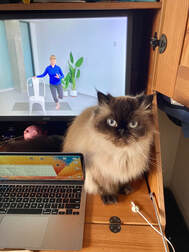 My trusty exercise assistant My trusty exercise assistant Recently, a former student reached out to ask if I’d be willing to teach an Essentrics session for her and a few friends. I spent more than a decade teaching Essentrics in the Ottawa area, but it’s been a few years since I taught a group fitness session. So I thought about it for a few days—specifically, the work involved in setting up and preparing for classes again. In the end, I politely declined and directed her to other possibilities. I no longer teach Essentrics, but it’s still a part of my life. Even before I began the instructor certification process, I had been following the Classical Stretch by Essentrics episodes and DVDs for almost 10 years. It’s a no-impact, (mostly) equipment-free workout that can be done anywhere, and I still include it in my repertoire of exercise. That’s the key for me: it’s part of my exercise options, but it’s not the only one. I believe that variety is the spice of life when it comes to exercise. You see, I don’t live to exercise—and I didn’t either when I was a full-time fitness professional—rather, I exercise to live. As I get older, I appreciate more the importance of switching up workouts to avoid overuse injuries, keeping your brain in the game by learning new things, and making sure that I’m enjoying what I’m doing. So, I do still practice Essentrics, but much less frequently than when I was teaching multiple weekly classes. For the itinerant exercise consumers like me, I offer the following recommendations for incorporating Essentrics into your life. Miranda’s books. Miranda Esmonde-White is the brains, heart, and soul behind Essentrics and is a true Canadian fitness pioneer. She has penned several books on the Essentrics technique, and these are presented below:
No matter how you choose to move your body, please do it often. It will help you in the long run. NOTE: I am no longer an Amazon Associate, so I don't earn commissions from recommended products.
0 Comments
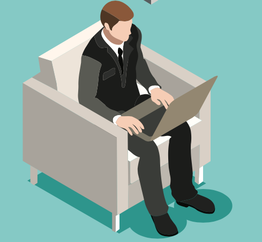 What a strange year it has been. A once-in-a-century pandemic has uprooted the entire planet, the toll to human life staggering. No one has been unaffected by the events of the past year, including me. Here’s a brief glimpse into the past year, from a recovering fitness professional. Shortly before the world got turned upside down, I began a new chapter in my life. My fitness business of more than a decade was shelved in favour of a full-time job for a health charity. If you’ve read my fitness memoir, I Can See Your Underwear, or even the excerpt I shared one year ago, you’ll know that I was feeling burnt out from focusing on other people’s fitness goals, at the expense of my own. That’s what partly precipitated my retirement from being a fitness entrepreneur—I needed to put my goals first. The office job was a way to reclaim my evenings and weekends—punch a clock and contribute when at the office, while focusing on myself during my down time. I even managed to find a job that allowed me to engage in active transportation—the office was a 40-minute walk in each direction, a 19-minute bike ride when the snow finally melted. And then it happened—seven days in to my new role, everyone who could was instructed to work from home until further notice. [Spoiler alert: one year later, we’re still awaiting details on the return-to-the-office plans. Thankfully, none of us have been holding our breath.] Overnight, my commute became much shorter—eight steps from the kitchen to my desk, eighteen steps from there to the bathroom. The line between home and work blurred for many, myself included. I spent many more hours in a seated position, and it didn’t take long for my body to protest. You’ve heard of the Freshman 15? Well, I acquired the COVID 19. All that extra sitting began wreaking havoc on my now-larger frame. Another lockdown during the worst of the winter months meant that, in addition to being more sedentary that I ever have, I was also less physically active. That’s when the pain started. It began with foot pain in my left foot, then in my right foot, followed by low back pain and excruciating hip pain. Some targeted physiotherapy treatments helped, as well as a gentle reminder from my physio to do daily stretches. I began with a few minutes of stretching when things started acting up. The stretching helped and I was thankful I could draw on my fitness background for my own needs. And yet, my problems with pain persisted, even worsened. Until, that is, I went back to my roots. You see, it was a love of the very popular PBS fitness show Classical Stretch that opened me up to a career in fitness. I first discovered Classical Stretch on a snowy winter’s day in late 2001. I practiced it on and off throughout the decade, always feeling better after the 22-minute full-body rebalancing it provided. I jumped into the fray, beginning instructor training in early 2010. One thing that happens when you’re a group fitness instructor is that every workout you do is focused on your clients’ needs. But now, back to doing my own workouts in my living room—often in my pjs—I could focus once again on my own needs. And boy, did I need a full-body rebalancing! After a decade as a teacher, I was experiencing a renaissance as a student. And practicing what I often preached: the best exercise for you is the one you enjoy. Because if you like it, you’re more likely to do it. So I’m back to tried-and-true 22-minute workouts in the comfort of my own home. And my body thanks me every day. What’s the lesson here? When it comes to exercise, physical activity, and just plain movement, find what you love and keep going. Wash. Rinse. Repeat. *To be clear: the weight gain was due to my constant close contact with the kitchen. I have been eating more than I needed to, from a caloric perspective. My weight gain was food-based, not due to a lack of exercise.
 When I last wrote a blog post about exercise, the COVID-19 pandemic was just beginning to take hold. None of us knew how long until we could resume our regularly scheduled activities. The "world outside our windows" wasn't so much a scary place, just a really empty place. As we enter the fourth month of restrictions on our movement and activities, many organizations in Ottawa have pivoted to offering online workshops and fitness classes. And I've been recruited to help deliver some of these offerings. So, here's what's on tap in July and August:
Workshops: How Can Seniors Prevent a Fall? As we age, our risk of falling increases, as does the likelihood that a fall will cause an injury. How can we help seniors prevent a fall, maintain their independence, and avoid a hospital visit? Before the time of COVID-19, falls were the leading cause of injury, emergency room visits, and hospitalizations for seniors in North America, and half of all falls happened in the home. What about now? No data has yet been compiled on home-based falls during the pandemic, but the number has likely increased, as seniors have become more housebound as well as more sedentary. Amanda Sterczyk, an independent author and personal trainer, will teach participants about the balance "sweet spot", the complexity of our balance system, and how easy it is to incorporate exercise into their daily lives to improve their balance and prevent falls. There will be three opportunities to join this online workshop: Friday, July 10th, 10:00 am, Ottawa Public Library's Zoom Portal. The session is free but you must register with the library to attend. Monday, July 20th, 2:00 pm, Old Ottawa South Community Association. The session is pay what you can, and you must register with OSCA to attend. (Note: workshop listed as "Balance and Your Body: How Exercise Can Help You Avoid a Fall.") Monday, August 17th, 2:00 pm, Old Ottawa South Community Association. The session is pay what you can, and you must register with OSCA to attend. (Note: workshop listed as "Balance and Your Body: How Exercise Can Help You Avoid a Fall.") Classes: Online Fitness for Seniors There is a three-week series of classes that will be hosted via the Ottawa Public Library's Zoom portal. Each class is free, but also requires registration. If you want to join all three, you'll have to register for each of these classes: Friday, July 17th, 10:00 am, standing exercises Friday, July 24th, 10:00 am, seated exercises Friday, July 31st, 10:00 am, lying down exercises (can be completed on the floor or on a bed) Thursdays at 2:30 pm, MOBA: Stretch with Amanda.* If you're missing classes with me, I've returned to teaching once a week. Please contact me for registration details. *(MOBA = mobility and balance) 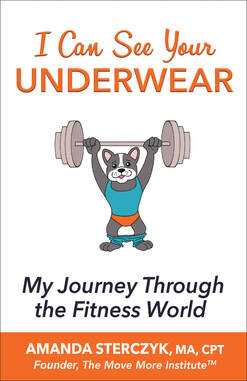 After 10 years in the fitness industry, I decided to pack it in. But not before sharing my experiences as a solopreneur (solo entrepreneur). And some funny, some crazy, things that happened to me along the way. Below, you'll find the complete table of contents, as well as an excerpt from the foreword. And if you'd like to order your very own copy, you can pick it up on Amazon. Like I say in the introduction of this, my fourth book, "If I'm being honest, I entered the fitness industry for all the wrong reasons." From the foreword: “Whether you are an avid fitness junkie, weekend warrior, fitness instructor, or just your everyday Joe, there's something for you in this book…As you read through Amanda's journey from beginning to end, you gain inside information and a few laughs you didn't know you needed. So sit down with a cup of coffee and get ready to have a great conversation with a friend. Because that's exactly what this book feels like — a conversation with a friend about real life.” And here's a glimpse at the Table of Contents:
 Image source: Needpix Image source: Needpix The following excerpt is from my upcoming fourth book, I Can See Your Underwear: My Journey through the Fitness World. It describes my first in-home private training client in 2010. I was a new Essentrics® instructor, and completely naive about how to navigate the fitness world. (copyright Amanda Sterczyk 2019, all rights reserved) My very first private session was probably my scariest encounter. And it actually kept me away for privates for a few years after that. A woman had contacted me about an Essentrics standing and floor workout in her home. We’re talking early in my newfound fitness career, circa 2010. You know, pre-iPhone (for me), pre-social media checkins (for me), pre-Find My Phone apps (yup, you guessed it, for me). When you went somewhere, no one knew where you were. Unless you told them beforehand. That was my first mistake.
I arrived about two minutes before our scheduled time. My first doorbell ring went unanswered, while my second one had me greeted by a face peering past a chain lock. After introducing myself, my new client unlocked the door and revealed her workout clothing. It included a very see-through top, minus a bra for support. At least that’s what I think, as I looked away fairly quickly. When I did look away, my gaze fell over her interior. It appeared as if every square inch of floor space was filled. The technical term is hoarding disorder. My client backed up so I could enter the small, crowded foyer. As I was removing my shoes, she closed the door. I was still assessing the space in front of me, trying to determine if how one, let alone both of us, would have enough space to exercise. That was my second mistake, and we’ll circle back to it in a moment. My client invited me into a beyond-capacity living room. I had already determined that the floor portion of the workout was no longer feasible, so I was quickly assessing in my head how to modify the workout to be standing-only. You’ll recall that I was a very new fitness instructor, with limited instruction time under my belt, so thinking on the fly was a skill I had not yet acquired. I stumbled over my words as I explained to her that we’d be doing something a bit different. Then I asked her if we could move the coffee table so we could face each other in the room. She balked at the idea, so I quickly offered to stand in the hall while she stood between the sofa and the table. Let me explain a bit about Essentrics here before I continue: the workout is a non-impact, bodyweight routine that uses large, flowing movements in order to work the joints through their full range of motion. In addition to having space on your exercise mat to move, you need space in the air around so you don’t bang your hand or arm on anything. As you can well imagine, the current configuration was making it difficult to complete circulate movements in a flowing manner. I banged a few things as we were “moving” through the workout, something that was causing distress in my new client. I realized that this was probably going to be my one and only visit to this client’s home, a fact that wasn’t disappointing in the least. At the end of the thirty minutes, I turned to leave. And the door wouldn’t open. It turns out the client had locked the door from the inside, and thrown away the key (so to speak). But seriously, the door was locked, and the deadbolt was missing the required key. I looked around the cramped and messy vestibule to locate the key — I was suddenly feeling very uncomfortable and wanted some fresh air — but to no avail. Did I mention that, even though it was the height of summer, every door and window was shut tight, every curtain and blind was drawn. And, it would appear, every door was locked. A wave of panic rolled through my body. Shit, shit, shit. What had I gotten myself into? I was seriously questioning my new career, not at all comfortable in this current situation. Was she going to let me leave? Why was she taking so long to get to the door? Right, ALL the stuff blocking her path. I turned around just as she arrived by my side. She leaned over a small table with multiple, identical drawers. She opened one and extracted the key for the deadbolt. How had I never noticed her remove the key and place it in the drawer upon arrival?? Short answer: I was overwhelmed by the sheer volume of things in her house. Long answer (sort of): I was so trusting, that it never occurred to me to imagine a negative outcome; and yet, no one knew I was there. When the client finally unlocked and opened the door, I exited and headed for my car as quickly as possible. I drove home with all the windows open, taking lots of deep breaths along the way. And it wasn’t just for the fresh air. I had to calm my rattled nerves. I’m sure it will come as no surprise to you that this client never contacted me for a follow-up session. That was fine by me, because I would have refused. The entire incident scared the bejesus out of me. So much so, that it took several years until I was willing to entertain the thought of additional in-home private sessions. I would stick to group classes in more public spaces. Pretty ironic, don’t you think? 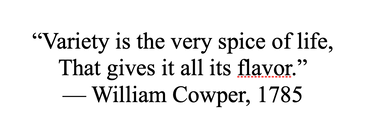 Recently, one of my class participants chimed in with the following, “Will you please tell us what we should do for exercise over the summer?” To which I replied, “Move more.” You see, I take a teaching break every July and August, and she was wondering about workout suggestions. I was only partly kidding when I responded with “move more.” Most people sit too much, even if they do attend weekly exercise classes. Heck, I’m in the process of writing my third book on the topic. But I would also like to address her question more specifically. When I take a break from teaching Essentrics, I take a break from Essentrics altogether. Don’t get me wrong, I love Essentrics. But I also love other ways of moving and working out. And our bodies need variety in movement and exercise. That’s what fellow fitness professional Kathryn Bruni-Young says about variety in exercise. Kathryn is the founder of Mindful Strength and I’m taking one of her online courses this summer. Her amazing Facebook group is one of the reasons I’ll never be able to fully extricate myself from Facebook. She is a pioneer in the fitness industry and an ardent promoter of mindfulness as it relates to body awareness. Her podcasts, blog posts, and online workouts take me outside my comfort zone both as a teacher and a student. But please don’t ask me what class you should take when we’re on a break. Before I became a group fitness instructor, I rarely attended group fitness classes. I’m more of a loner when it comes to exercise. If you’re interested in joining a group fitness class, we are fortunate in Ottawa to have so many exercise options available. I honestly don’t keep track of other group fitness options — I’m busy enough with my own classes and clients. But if someone asks me about a different type of class, I tell them, “Try it! You may love it.” One of my other regulars recently tried Nia dance for the first time. She commented that she enjoyed how it was a bit similar and a bit different from Essentrics. With that in mind, I thought instead I’d share what my fitness plans are this summer. You may have different plans entirely, and that’s okay. Try a few things and see what sticks. You may be surprised at what motivates you to move. And I’ll tell you now, many of my workouts happen in my living room — thanks to YouTube! 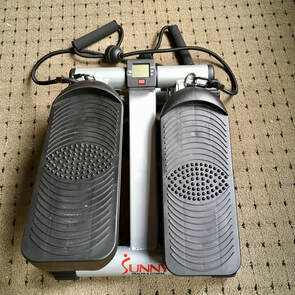
I hope this list helps you choose your fitness options this summer. Remember: Move more, feel better. And have a great summer! 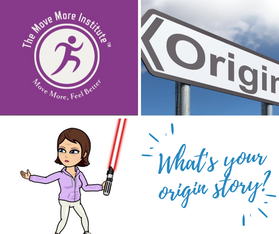 I wasn’t always in the fitness industry; I studied psychology at school. During my university days in the late 1980s/early 1990s, a professor announced that our generation would not have jobs for life. Instead, we would become the “continuous learning generation” and cycle through three to five career changes. To be honest, I breathed a sigh of relief. At that point, I wasn’t entirely sure of two points: 1. that I could make a career with a Bachelor of Arts, Psychology, and 2. that I wanted a career in psychology. The first realization drove me to extend my post-secondary study — first, to complete an honours thesis, and then to complete a Master of Arts, Psychology. And so I began my career in health promotion research. Not psychology — health promotion research — which I suppose qualifies as my first career change. And I loved it. I even toyed with completing a PhD in the field. But then research funding started to dry up, and the opportunities became scarcer. That’s when I conjured my next career transition, which landed me in human resources. In high tech during the 90s tech boom. Talk about a trial by fire. Given my penchant for research, I found a home on the compensation side of HR. Numbers didn’t scare me, but having employees crying in my office did. The HR career sandwiched two maternity leaves, and I realized that I loved being a stay-at-home mom. More on this later; be patient, grasshopper. During a return to the workforce, a foot injury sidelined my hobby as an occasional runner, I was devastated to hear that I needed orthotics and “indoor shoes.” Indoor shoes?! I’m a barefoot babe, and in my world, shoes are for outside only. Sometimes. During my first maternity leave, I had discovered the TV version of Essentrics® - Classical Stretch™ with Miranda Esmonde-White. I stumbled upon Classical Stretch again shortly after the shock of indoor shoes was thrust upon me. I’m not kidding when I say I was an “occasional runner.” I’ve never been a huge fan of structured exercise, which is partly why I stopped following Classical Stretch a few years earlier. But when my foot problems began to recede, I decided I needed to become more diligent about working out. Let’s be clear, I’ve always led an active lifestyle — walking and biking almost everywhere, taking the stairs instead of the elevator — but at the same time, I eschewed structured workouts. One day, as I was searching for a Classical Stretch DVD online, I discovered that I could train to become a “Classical Stretch instructor” from home. You mean, I could get paid to exercise? Having the accountability of teaching others whilst working out appealed to me, because it forced me to be more consistent with my workouts. And actually get out of my pjs to exercise. Over four years — 2010 to 2013 — I studied and passed the four levels of certification to become a fully certified Essentrics instructor.* And I taught A LOT of classes. In 2014, I was teaching 15 classes a week, in eight different locations across the city. In addition to teaching a lot, I was also travelling a lot between these classes. And spending a significant amount of time in front of my computer to market and promote the classes. All of a sudden, my enjoyment of teaching a workout I loved was taking its toll on my body: - I developed a serious shoulder injury from too much computer use; - I fell down the stairs when I was rushing and carrying too much (you can’t really see the stairs when your arms are overflowing with stuff); - I was involved in a car accident when I was hurrying to complete an errand before class; and - I generally felt burnt out all the time. Too much rushing. Too much on my plate. Something had to give. And it did. Around the same time, I was reading and writing about the risks of too much sedentary time. Headlines like “Sitting is the new smoking” preceded articles that were imploring people to sit less, move more. It was from this zeitgeist that The Move More Institute™ began to take shape. Even if people were going to the gym or a fitness class on a regular basis, they still needed to get off their butts in more frequent intervals. Every. Single. Day. I wrote multiple blog posts and social media posts on the topic. And I also created workshops entitled, “I’m not sitting anymore. What now?!” The workshops were well-received. In addition to my Essentrics certification, I began taking other fitness courses and certifications, including my personal trainer certification. I was spending a great deal of time teaching my clients about body awareness. How? By teaching them how to use their muscles for their intended purposes. Even though I worked part-time at several gyms in this period, I much preferred to meet people on their home turf. In so doing, I could show them that they could be physically active without spending tons of money. Do we really need fancy clothes, complicated equipment or expensive memberships to use our bodies? Of course not! If you choose to hire a trainer, join a gym or exercise class to workout, that’s fantastic. But it’s not the only way to move your body. You also don’t need to get sweaty to get your body working. The World Health Organization defines physical activity as "any bodily movement produced by skeletal muscles that requires energy expenditure.”* Bottom line, all exercise is movement, but not all movement is exercise. As I looked back over the past 10 years, I realized that I was at my healthiest when my kids were young and movement was the name of the game. We were active all day long, whether I was playing with my kids or just taking care of them and running our household. Injuries began when I was sitting too much in an office job and then running myself ragged with my fitness business. The Move More Institute™ began to take shape. My slogan became “Move More, Feel Better.” Not exercise more. Not head to the gym and lift more weights. Just move more. My goal with movement coaching is short-term coaching, long-term results. And this goal is woven throughout my book Move More, Your Life Depends On It: Practical Tips to Add More Movement to Your Day. As I say in the book’s dedication, I wrote it for people who think physical fitness is beyond their reach. So there you have it. That’s my origin story, so to speak. After my book was published, someone asked if I had always wanted to write a book. Initially, I said no. But then I remembered a project from school; I believe I was in grade five. Our task was to create a family crest. One of the quadrants had to be how you saw yourself in the future, as an adult. I had drawn a book cover, complete with title and author - me. So I suppose I have always wanted to write a book. References:
World Health Organization, Fact Sheet on Physical Activity, http://www.who.int/topics/physical_activity/en/. reprinted with permission *Classical Stretch is the name of the TV workout, while Essentrics is the live version — aka, classes and privates with instructors. If you only remember one thing after an Essentrics class, hopefully it’s this: full-body rebalancing. Sure, you’re more likely to remember “killer pliés” or “side leg lifts - the second leg is always the hardest”. But what I hope you take away from the experience is the full-body nature of an Essentrics workout. We work the entire body, from your fingers all the way to your toes. Because you’re only as strong as your weakest muscle, only as flexible as your tightest muscle. This tenet is not only key in your day-to-day living, it can also help you in your sport of choice. Take strength training, for example. When you’re lifting heavy weights, are you thinking about your hands and feet? In most cases, not likely. But you should be, at least on some level.
Great quote, which leads me back to my query about your hands and feet. First, let’s tackle the hands. Hands, aka grip strength
Think about it: how are you going to deadlift if you don’t have strength and flexibility in your hands to grasp that barbell? Weak or tense (i.e., tight) muscles impact joint range of motion and have a subsequent domino effect on muscles and joints further down the line. Remember - muscles don’t work in isolation. There are agonists, antagonists, fixators, neutralizers, muscle groups, muscle chains.
Your FeetMoving right along…let’s talk feet. Think about your house for a moment (any house, if you live in an apartment) - what would you do if you discovered that the house’s foundation was crumbling? You’d get it fixed. Right away. Because a crumbling foundation is weak and can’t safely support the structure it was designed to support. Now think about your feet. How are they holding up? How are they doing at holding YOU up? Your feet are the foundation of your body - meant to support your entire body. If part of your foot is weak or tense, it will impact both your balance and your entire body alignment. Like the hands, we always work the feet in Essentrics. And no doubt you’ve read my posts or seen my segments on the feet. No? Then click here for more background.
A Story of Essentrics and Strength TrainingOne last word on the benefits of Essentrics hand and foot work for strength training, and it goes to Certified Essentrics Instructor, Carrie James. Carrie has been a CrossFit athlete and coach since 2011. CrossFit is a form of strength training that focuses on the compound lifts - Snatch, Cleans, Jerks, Presses, Squats and Deadlifts. [You wanna know more about CrossFit? Google it, my friend.] In 2015, Carrie discovered Essentrics thanks to her mother, and she began her journey to become a certified instructor. And take it from her, strength training and Essentrics work well together: “I love the confidence that strength training gives me and I do like having muscle definition. I love the relaxed feeling of "flow" that I get from doing Essentrics and how effectively it works to keep my structure balanced and at ease. I appreciate that both work synergistically to make me strong and healthy!” Furthermore, Carrie has found that Essentrics can improve her strength training: “Essentrics has eased tendonitis in my elbows, eliminated persistent shoulder pain - by retraining proper muscle chains and helped a broken ankle heal with full range of motion. I believe Essentrics helps my lifting form by improving ankle, wrist, hip and shoulder range of motion. I also believe Essentrics helps me to recover more quickly after strenuous workouts, thereby helping me to train harder.” The Final WordWell, thanks for sticking through to the end of this post. I hope I’ve convinced you that: a) it’s important to work every muscle in your body, including your hands and feet; and, b) if you’re a weightlifter, Essentrics is a great compliment to your existing training regimen. References
Special thanks to Nathane Jackson and Carrie James for sharing their knowledge and expertise! 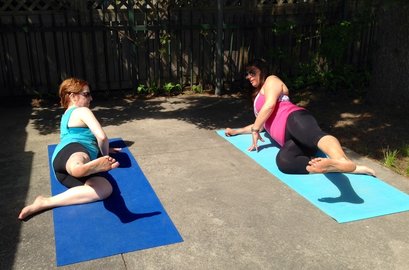 Often during Essentrics classes, I have to cut myself off from talking. If I didn’t, the class would stop and we’d have an anatomy lesson instead! There are so many wonderful benefits for your body when you do Essentrics, and I love to share the details with my students. Partly to educate them, and partly so they understand why we do things the way we do in Essentrics. Take side leg lifts, for example. My students “love to hate” these powerful exercises. They know I’ll keep on top of them to: “pull out, pull out, pull out”; “rotate in the hip”; “roll the hip forward to activate at the abductor muscle group”; etc. You get my drift. It’s easy to have your form slip during the side leg lift sequence. After all, your brain wants your body to take the path of least resistance. Which means using large muscles to move instead of smaller stabilizer muscles. With side leg lifts, we want to stretch and strengthen all 17 muscles that work hip movement.* That’s right, 17 muscles for that one joint. Take a look at the images below to see the complexity of the muscles that act on the hip joint. Muscles of the Hip
Now that the anatomy lesson is over, let’s revisit side leg lifts. Why Do We Do Side Leg Lifts?
In order to decompress the joint, we need to constantly pull out - pull the leg away from the body, while simultaneously pulling the torso in the opposite direction. Think medieval torture rack and, don’t worry, you’ll thank me later when your hips feel more unlocked and free. When all of these muscles are strong and flexible, you’re less likely to sink into your hips when you’re standing. That’s a good thing for improving your standing posture. As you pull the pelvis in the opposite direction of the leg, you are also strengthening your core muscles, further improving your posture.
“I’ve been doing Classical Stretch for years. Why should I go to a live Essentrics class?”1/16/2017 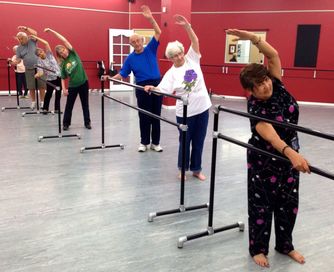 Great question! As an Essentrics instructor I hear this question - or a variation of it - every so often. There are so many terrific workouts available online, including Classical Stretch and Essentrics, that people can workout wherever and whenever it suits their schedule. Don’t get me wrong - I’m all for people fitting home-based exercise into your busy schedules. But it’s also beneficial to supplement your own workouts with an instructor-led live class. Are you coachable? Participating in a group class has a lot to do with your coachability. Being coachable means you have a willingness to be corrected and to act on that correction. One of my regular students had been practicing Classical Stretch on her own for years before she joined my classes. A few weeks after joining, she approached me after class to say how much class was benefitting: “I had no idea I was doing these moves incorrectly all these years!” Not incorrectly in my view - my corrections and cues to her were to tweak her positioning and thereby enhance her workout. You’re still enjoying great benefits with your home-based workouts. What an instructor will do is correct your positioning so you’re not overloading one area of your body while another area is neglected. An Example in ActionTake an Essentrics side-to-side lunge sequence. The main goals of side lunges are to strengthen arms, and tone the waist and hips. Depending on the type of sequence during the side lunges, there can be any number of secondary goals. What, exactly, does it mean to “tone” your waist and hips? In order to tone your muscles, you need to strengthen them.(1) This is where the “strength” part of “stretch and strengthen” of an Essentrics workout comes into play. We’re moving throughout the side lunge sequence, lifting and lowering our own body as we move through specific positions. Basically, it’s a type of calisthenics: “a form of exercise where you use the weight of your own body to build muscle.” (2) Calisthenics (defined) - exercises consisting of a variety of gross motor movements - often rhythmical and without equipment or apparatus - to increase body strength, body fitness, and flexibility, - using only one's body weight for resistance (3) To strengthen all of the muscles in your waist requires a sequence that challenges all the muscles along the circumference of your waist - front, back, and sides. Too often, people lean into the movement, reducing the work of the sides and overloading the back. But the biggest challenge I’ve seen is people who struggle to keep their hips down and engage the sides - aka the internal and external obliques. Side Lunge vs. TriangleOnce in class, a person yelled out, “this is a triangle from yoga!” Actually, no. But I realized that people can erroneously believe this and position themselves accordingly. Let’s examine the goals of a yoga triangle pose: core strengthening, open the hips and shoulders, stretch the legs. The first goal is great and in line with an Essentrics side to side lunge sequence. But “open the hips and shoulders” means flexibility - aka, another term for stretch. That’s why a triangle is typically a position that is held - it’s a form of static stretching. With an Essentrics side to side lunge sequence, we’re working strength and flexibility dynamically - by continuously moving through the sequence. I do regularly see participants lift their hips up as if they’re in a yoga triangle. The key with Essentrics lunges, though, is to keep the hips down. But what exactly does it mean to keep the hips down? Imagine you have to keep your hips parallel with the floor - both hips, that is. As you can see in the images below, the hips are not parallel to the floor in a triangle pose, but they are parrallel to the floor in an Essentrics side lunge.* Yoga Triangle vs. Essentrics Side-to-Side LungeAm I doing this right?Is my explanation clear as mud? Not to worry - that’s what our group classes are for! I’ll help you improve your technique and enhance your workout. References
1. http://www.bodybuilding.com/content/the-myth-of-toning.html 2. http://calisthenicsdaily.com/what-are-calisthenics/ 3. https://en.wikipedia.org/wiki/Calisthenics *Thank you to my friend and fellow Essentrics instructor, Cassandra McCoy, for providing me with a photo of an Essentrics side to side lunge! |
Categories
All
Archives
July 2024
AuthorAmanda Sterczyk is an international author, Certified Personal Trainer (ACSM), an Exercise is Medicine Canada (EIMC) Fitness Professional, and a Certified Essentrics® Instructor. |
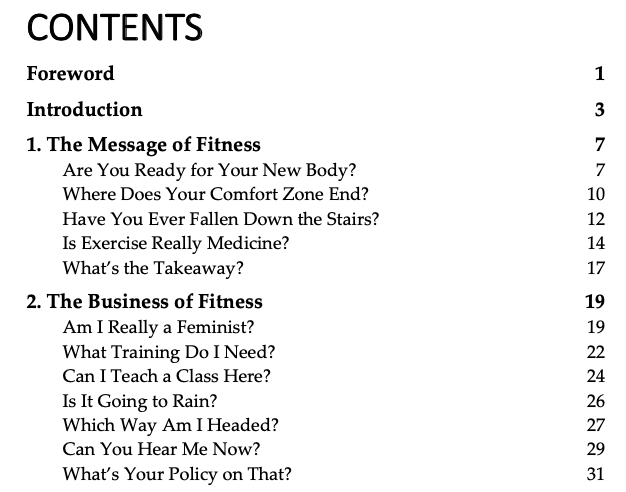
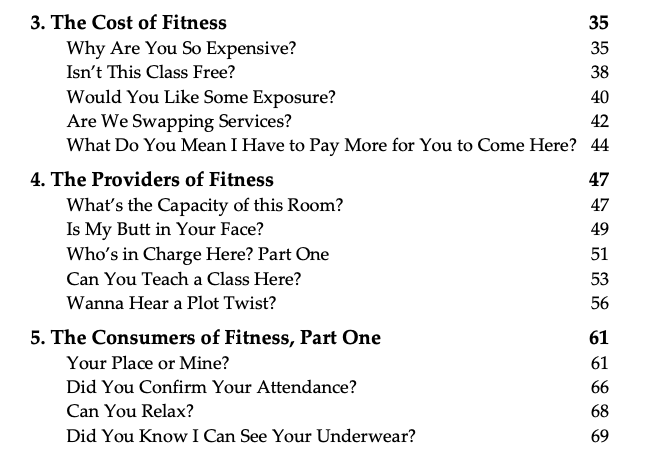
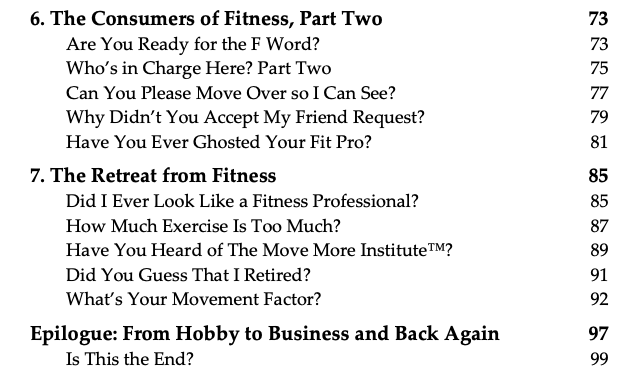
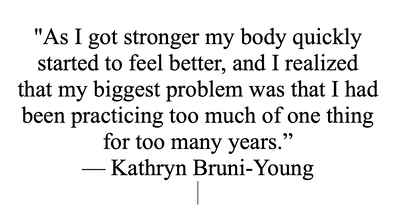
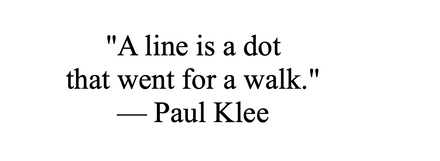
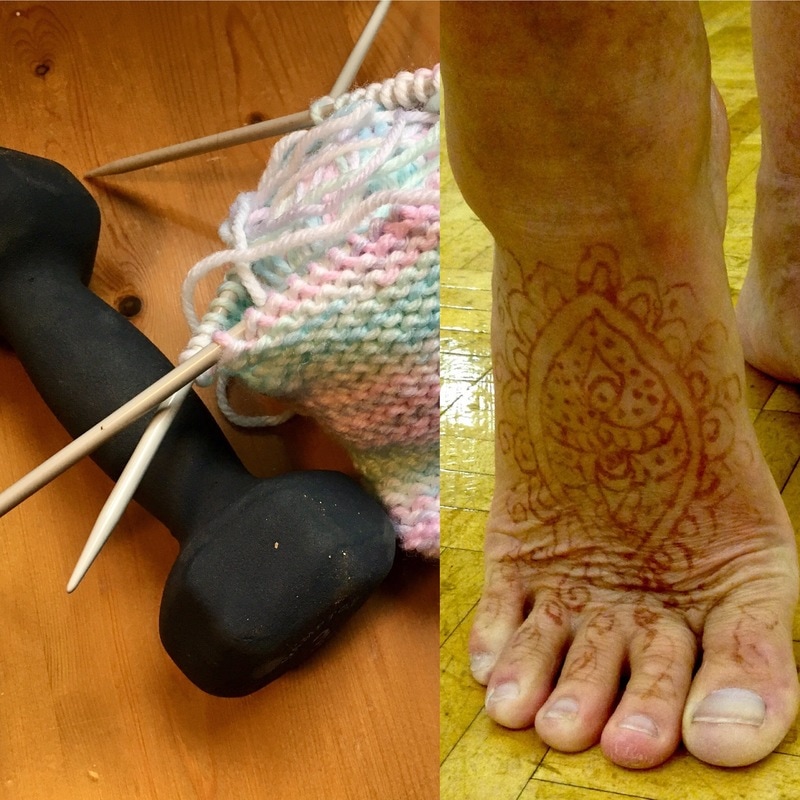
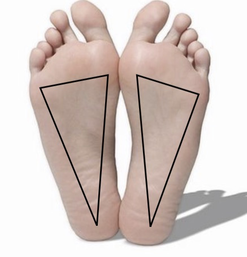
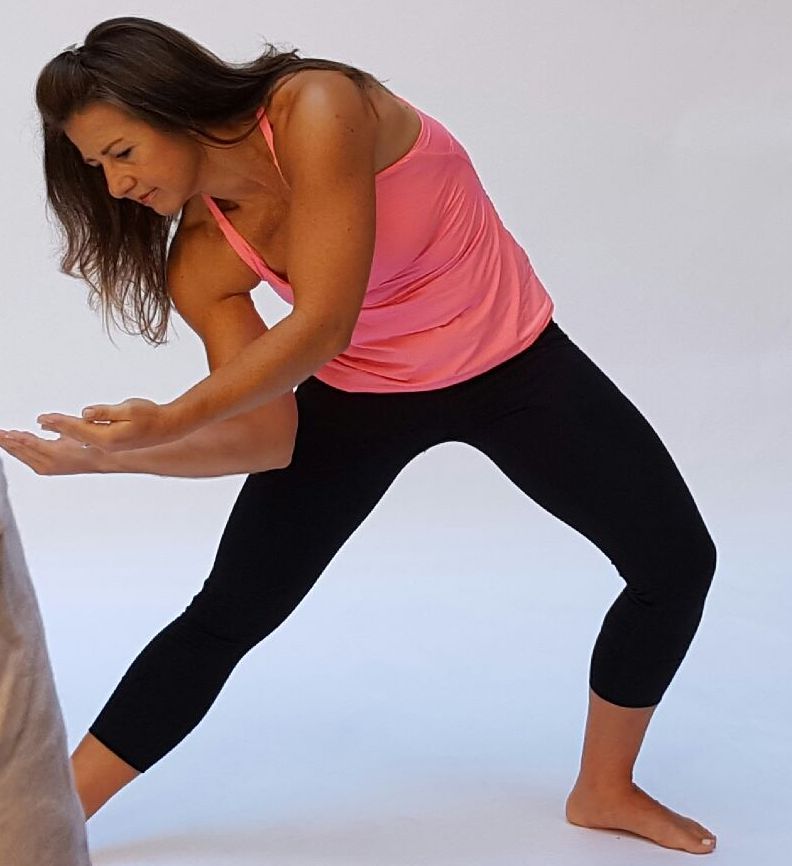
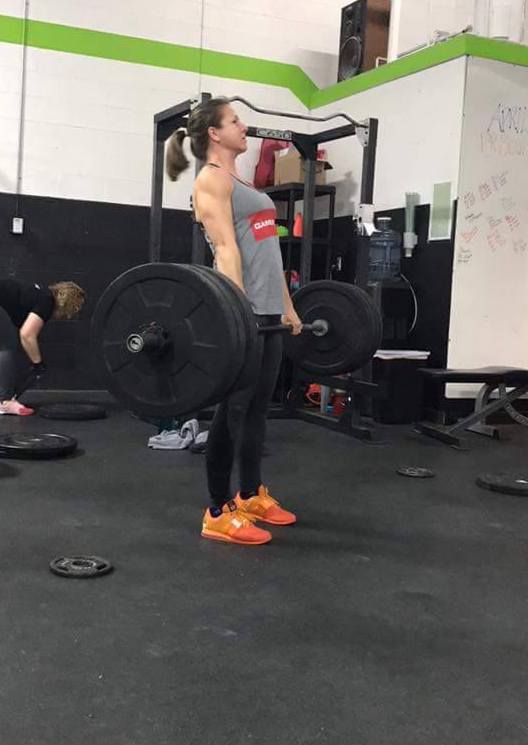
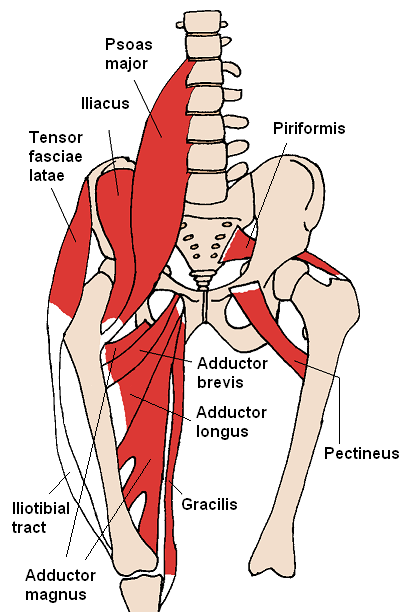
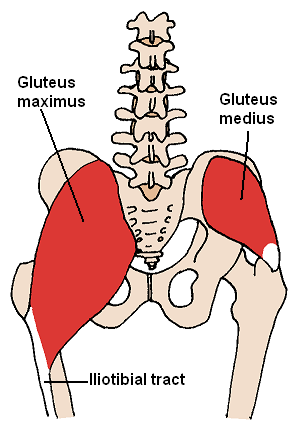
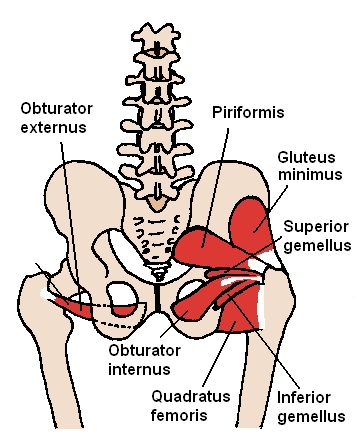
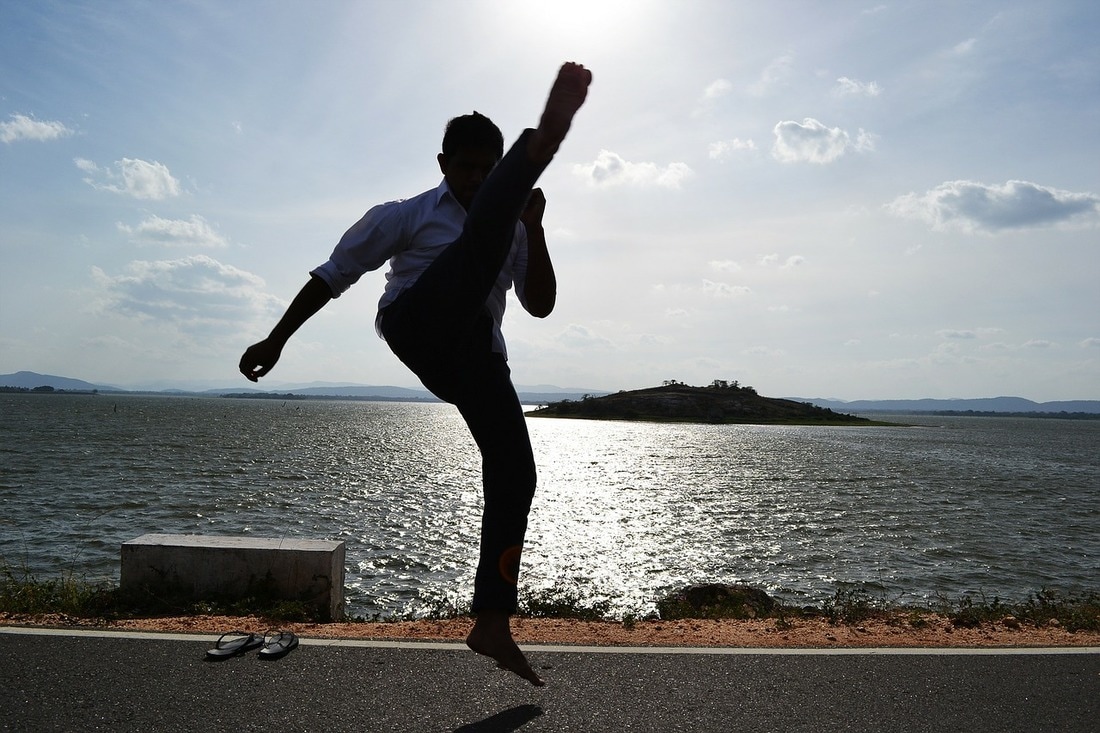
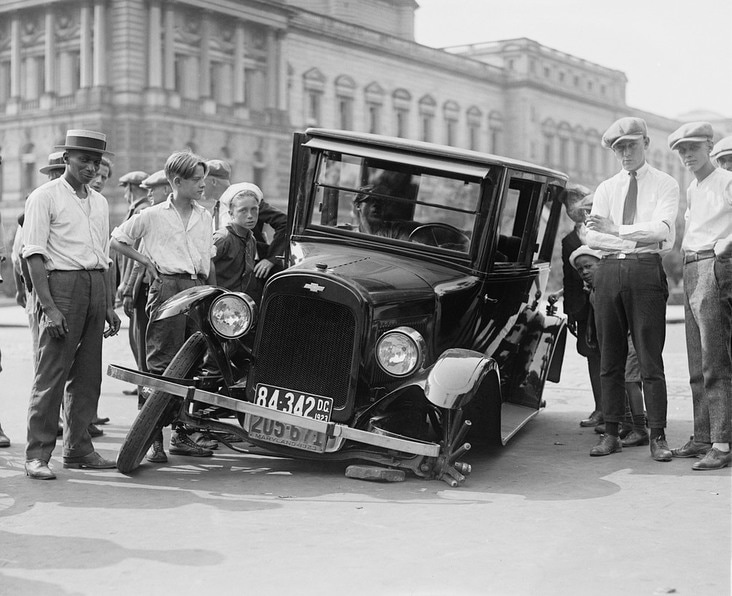
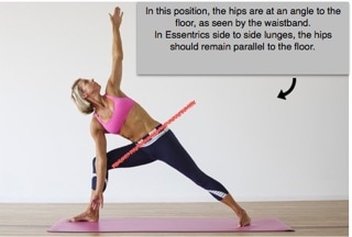
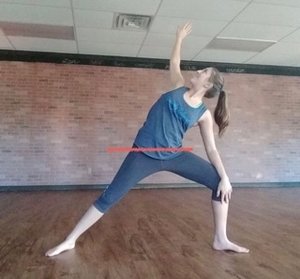
 RSS Feed
RSS Feed